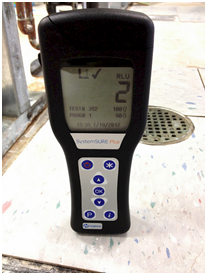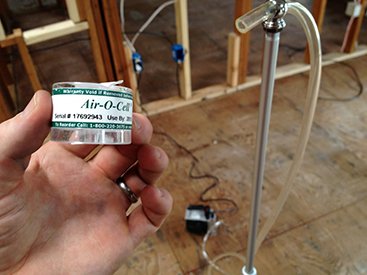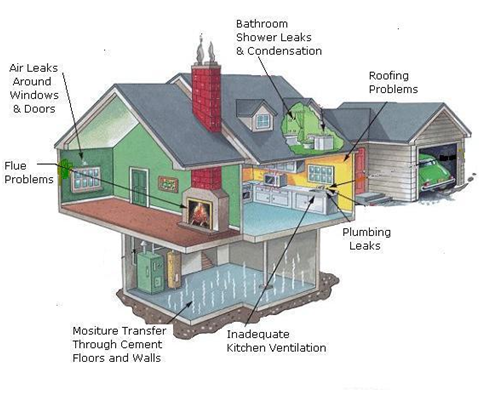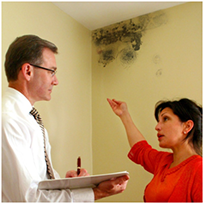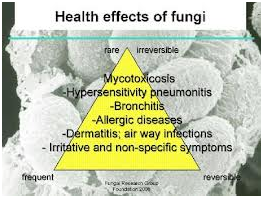San Francisco Mold Testing: How We Test for Mold
Preliminary and Post Mold Inspection in the Bay Area
Air Samples: A specialized mold air sampling cassette is connected to a high-flow air sampling pump; Fifteen liters of air per minute is then drawn through the cassette for a pre-determined time, causing the spores in the air to impact on the slide inside. The casettes are then sent to the laboratory for analysis. This test allows us to determine all the species and levels of mold spores in the air.
Tape Lift: A surface with visible mold growth can be sampled with clear sticky tape. The tape is placed on a clean glass slide, sealed in a plastic container, and sent to the laboratory for analysis. These results will allow us to estimate the concentration of mold spores on a given surface area.
ATP Swab Samples: A surface suspected of having mold growth is wiped with a pre-moistened cotton swab and then placed into the testing device which then measures adenosine triphosphate (ATP), the universal energy molecule found in all animal, plant, bacteria, yeast and mold cells. Microbial contamination contains ATP, but in small amounts. After cleaning, all sources of ATP should be significantly reduced. The system measures the amount of light generated and provides information on the level of contamination in just seconds; the higher the reading, the more contamination present.
This test confirms the presence or absence of mold on a surface and is often used for post mold removal testing.
Where is Mold commonly found in Homes?
Is the Mold gone for good?
If mold growth is to be controlled in a building the most important action is to eliminate the source of moisture that caused the mold problem. No matter how thorough the mold cleanup is, the water problem must be resolved or mold will return.. A visual inspection of the area that has been remediated will show no evidence of present or past mold growth. There should be no moldy odors associated with the building. If moldy odors are present in the building, the mold remediation has NOT been effective.
Do you suffer from sinus problems?
An estimated 37 million people suffer from chronic sinusitis.” Studies indicate that fungus is likely the cause of all of these problems.
Breathing in elevated levels of air borne fungi can initiate an allergenic or toxic response in an otherwise healthy individual. Individuals that may have a weakened immune system and live in an indoor environment with high levels of fungi are of particular concern. Infants, young children,and the elderly are at an increased risk for experiencing adverse health effects related to mold exposure . Approximately 100 species of fungi are known to cause infections. Fungi produce toxic metabolites during digestion called mycotoxins; The most widely recognized genera of fungal spores that produce mycotoxins are Aspergillus, Penicillium, Fusarium, and Stachybotrys. Allergy is the most common symptom associated with exposure to elevated levels of fungi. Fungi produce volatile organic compounds (VOCs) that can irritate mucous membranes .

